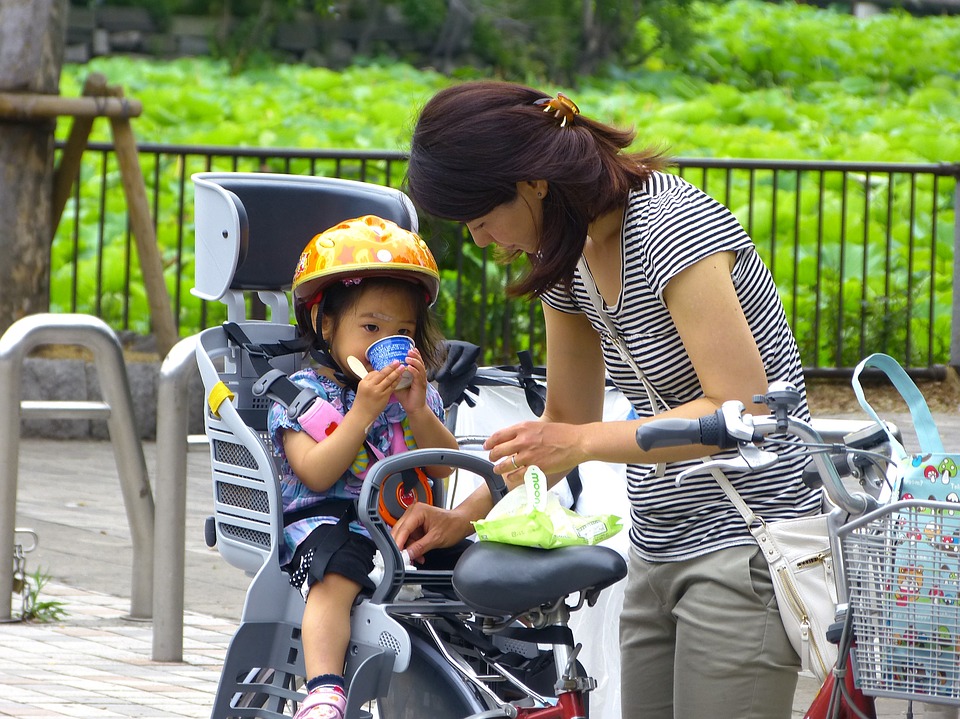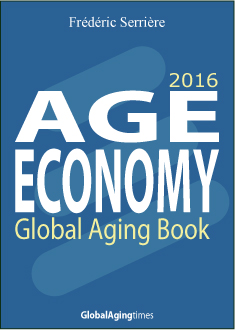With Japan’s aging population and a changing society, caregiving is a complex issue. But new technological innovations may provide solutions that were once unimaginable.
Dr. Michael Birt, PhD in Japanese Studies and Atlas of Caregiving advisory council member, has worked as a consultant for many large, multinational healthcare companies, a thriving sector in Japan. In 1990, Birt and a friend decided to open their own healthcare company focused on Japan’s aging population. He has since traveled the world to study gerontology issues.
Asia’s aging paradigm, explained
In 1985, Japan was still a relatively young country. But as both the birth and death rates continued to rapidly decline, it wouldn’t stay that way for long. By 2015, the aged population (65 years and over) had reached 33.42 million, or 26.7 percent of the population — a record high, according to the Japanese Statistics Bureau.
Compare that to the U.S.’s 14.8 percent, France’s 19.1 percent and Sweden’s 19.9 percent, and it’s easy to see how Japan’s challenges were unique. Change came quickly; while France’s population of over 65 exceeded 10 percent in 1940, Sweden’s in 1950 and the U.S.’s in 1975, it wasn’t until 1985 that Japan’s aged population exceeded 10 percent — only to quickly surpass the others.
“In Europe — especially the Nordic countries and France — the process of becoming an aged, urbanized and developed society took a hundred years,” Birt says. “That’s a very slow, organic process. Their societies could deal with all the issues around that — and you see how it’s evolved with, for example, how family maternal leave is now paternal leave in many European societies. But they had a century to grapple with that.”
“But in Asia,” he continues, “If you look at a country like Singapore, Taiwan or Korea, these changes are happening literally within a generation; within 25 years. So the velocity of that change creates very different dynamics than it did in Europe. The societies are still thinking of themselves as developing, but they’re having to handle developed-society issues.”
Thus, while Europe and North America had decades to discover solutions to their aging population, Japan has no such luxury — its aged population is only continuing to skyrocket.
Further, in 2015, Japan’s child population (under 14 years) accounted for only 12.7 percent of the population, its lowest level on record. Since 1997, the aged population has far surpassed the child population.
This leaves no obvious answer to the question, “who will care for Japan’s aging population?”
Searching for solutions
Because Japan’s population has aged so rapidly (along with much of Asia’s), the lack of future caregivers is an urgent issue. This brings both challenges and opportunities for innovation, explains Birt.
Compared to China, which faces financial challenges and unforeseen repercussions of its “one child” policy, Japan is in a better position to innovate in the caregiving space. “Japan got rich before it got old,” he says. “Having money helps moderate and mitigate some of these issues.”
Further, compared to places like the Middle East, Asia has excelled at informing its people of the resources and options available to them.
“What East Asia’s so good about is educating its population,” Birt says. “It’s just the opposite of the Middle East. Can you imagine leaving half of your society out of the education paradigm? That’s just a recipe for doom in the future for those societies that don’t educate women.”
Traditional Asian culture: birth role identities, culture, and karma
Unlike the Western concept of ‘creating yourself,’ Birt explains, Asian identity is typically set from birth, playing a large role into the country’s caregiving identity.
“Asia has strong Confucian and gender birth role identities — you’re really born into your role,” he says. “Everything about language and culture in Asia is that you aren’t independent. They laugh at that. How could you be independent when everything about you — where you’re born, who you are, how you are raised, is dependent on other people shaping you? The very words you’d use to identify people would be ‘older sister, older brother, younger brother.’ You don’t call your wife by her name; you essentially call her by her role.”
This, combined with the belief in karma, traditionally implied that women were responsible for caregiving, whether for her own parents or her spouse’s.
“One of the big ideas throughout Asian culture is karma — the sense of our actions revisiting us in different ways,” he says. “We are part of a web of human action. And so that certainly plays into relationships — it pays to be nice to people over the long term. This creates a very strong sense of obligation to pay back the reward of having been born and raised by your parents, and they owe that same obligation to their parents.”
“All the Confucian virtues are based on those relationships, and number one is of course the obligation to take care of your parents. And the ultimate role falls on of course the women in the society — it’s a very gender-based role around caregiving.”
The big shift: when women became educated
These caregiving dynamics began to change — not only in Asia, but around the world — when women began receiving the same education as men.
“What’s happening in the world everywhere is the larger dynamics of globalization, urbanization, and decreasing birth rate, and here’s the number one catalyst — the most major change in the world is the education of women,” he says. “Everything changes in a society when women become educated. Even in Catholic, developing societies, when women become educated, there are subsequent effects: they marry later, they have careers, they’re in urban settings, there are fewer children — it becomes this larger global phenomenon that has just reshaped the world.”
“Everywhere in the world has stopped having babies,” he continues. “With a few exceptions — India, parts of Africa — but even in Vietnam and Cambodia, very young countries are rapidly moving into this aging paradigm.”
In Japan specifically, the rise in education for women also brings a rise in power and freedom of choice, especially related to traditional duties such as caregiving.
“Japanese women are very well-educated. They do just as well at universities; they go to universities just like American women do, probably more than men do now. They travel more than men, they learn languages better than men — so Japan sees that as a resource. Women are very powerful in Japan.”
The result? The desire for a different kind of life than the stifling traditions of prior generations.
“In fact,” adds Birt, “they don’t even want to marry men. The big issue in Japan now is Japanese women don’t even want to get married, because they know then they have to buy into the whole cultural routine that goes with that, including taking care of the male’s parents or giving up their own interesting careers.”
Japanese policy structures haven’t caught up to this shift, Birt explains. Similarly to in North America, this heightened education, urbanization, divorce and complexity of life means more males will have to take on caregiver roles, especially as people live longer than ever before
“Even in Japan, I’m starting to see examples of these complex [male] caregiving situations. When I wrote that first article in 1990, it just would’ve been unthinkable; you couldn’t imagine that.”
Technological innovations may provide necessary solutions
Technological advances may herald potential solutions, says Birt. Japan, like America, is hoping to use new innovations to avert a caregiving crisis. But unlike America, it may face more challenges in attracting the help from people of other countries.
“Japan is already in an absolute population decline phase,” Birt says. “They’ve lost 3 million people overall. So they’re trying to become more innovative, too, about immigration and ways to bring in people to help on the caregiving side. It’s an interesting political experiment because Japan, like every other country in Asia, defines itself racially. You can’t ‘become’ Japanese — you’re either born to Japanese parents or you’re not.”
“In that sense, America is much more flexible in our full cultural experiences — that we come from somewhere else, and we become American through a process,” he adds. “So I think Japan is struggling with that one. But they’re doing some small-gauge innovations that are worth looking at. Japan is a global leader in robotics and artificial intelligence. The big companies in Japan are experimenting with all sorts of ways to assist aging people in-home with robotics and physical assistance. Remember, Japan’s a rich country, so they have access to technology and can afford technology.”
While Japan could benefit from America’s ease of attracting immigrants to assist with caregiving, America can learn from Japan’s technological advances — technologies that, Birt says, could be fashioned to be culturally acceptable and used in America.
“Japan is going to be experimenting with really cutting edge hardware and software technology around how to assist people,” he continues. “This is one thing [Atlas of Caregiving founder] Rajiv and I have in common; we’re very interested in what Japan’s going to do in this space. It’s going to be a fascinating thing to watch in the next 10 to 20 years.”
“The technology, the hardware/software application, is definitely a space America should be looking at. That’s what makes this interesting for Atlas, because aging is a global phenomenon now; the technologies that we all share are global as well.”
Interestingly, America’s own Japanese population is slowly coming around to other non-traditional methods of care. While the concept of professional care and retirement homes were traditionally considered shameful in Japanese culture, many Japanese-Americans are now utilizing retirement homes and thriving inside of them.
In light of the future of caregiving, this method of learning from one another’s successes while bolstering the effort of globalizing innovations, Birt concludes, may be the most efficient way forward.
“We used to say healthcare, caregiving and aging were the most culturally bound of all human activity because as people get older, they are the least open to new, innovative, and different activities,” he says. “But in fact, there could be all sorts of ways that we introduce technology that becomes frictionless or invisible to people as the result of global experiences.”
Atlas of Caregiving looks forward to having the global insights of Dr. Birt as they continue to discover ground-breaking insights and solutions for a better future of caregiving.


